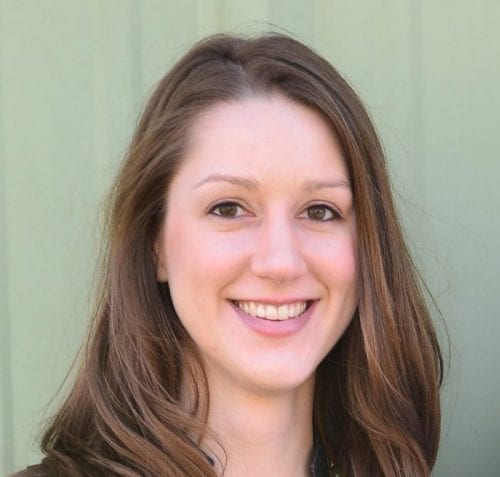Thanks to the hit movie Hidden Figures, the women of NASA have been in the news lately, receiving some well-deserved accolades for their amazing work. One SMU alumna, Alyssa Manis, is continuing the tradition now in her work as an Orbital Debris Scientist at NASA’s Johnson Space Center in Houston. “There are thousands of active satellites in Earth’s orbit, and there are estimated to be millions of debris including spent rocket bodies, debris from normal mission operations, and small pieces generated by accidental explosions and collisions,” Manis explains. “Some of these pieces are large enough to be tracked, but many are not, so we really don’t know how much is out there. These debris can pose a threat to operational satellites and human spaceflight missions, including the International Space Station.”
Dr. Manis, who received her Ph.D. in Computational and Applied Mathematics from SMU in 2013, uses her mathematics skills to analyze this debris. “I do computer modeling and data analysis to better characterize the space environment by understanding how much debris is out there, where it is, and how many new pieces may be created by collision or explosion events.” Her graduate work prepared her for this project in a roundabout way. “My graduate work at SMU involved mathematical models of the Atlantic Ocean circulation in response to climate change. It involved looking at uncertainties in the model and how random changes to parameters affected model behavior. After I finished my Ph.D., I became a postdoc at Texas A&M University at Galveston where I worked on tsunami models. While this was a very different application, [] my background in fluid dynamics and uncertainty analysis was actually a very good foundation for that. The work I continued to do there with randomness and uncertainties in models turned out to also be very good background for moving to NASA and orbital debris research, where the uncertainties are great. Again, it was a completely different field and application, but the general skills I had developed along the way were completely transferable.”
One thing that drew Dr. Manis to SMU in the first place was the ability to focus on real-world applications of mathematics. “When I was first looking for graduate schools, I focused on schools that offered an Applied Mathematics degree program, because I knew I wanted to be able to use my math for real-world applications and problems,” she recounts. “As I looked into SMU more, the culture of the Computational and Applied Mathematics program just seemed like a good fit. It was a relatively small program so I would get to know the professors well, and I would have the opportunity to be a teaching assistant and maintain that aspect of teaching and helping others learn. After visiting campus and meeting with some of the faculty and graduate students, it just felt right.”
SMU having a smaller program is one of the things that made it a great place to study mathematics, too. “The relatively small size…means that you get to know the professors well and they get to know you, leading to a more personal and personalized experience. The faculty research areas are actually quite varied for such a small department, so there is great opportunity to find a research topic of personal interest. That was very important to me when I decided to stay past my Masters degree and pursue a Ph.D. I wanted to research something that was interesting and meaningful to me personally, not just something that was assigned to me. I was fortunate enough to be able to work with [department chair] Alejandro Aceves, who was willing to work with me on a research topic that was not directly in his area of expertise. His flexibility and encouragement allowed me to broaden my experiences and learn how to more independently develop a research topic. I think that’s a great asset for a graduate program.”
How should someone interested in being the next Katherine Johnson (or Alyssa Manis!) prepare for that goal? “Take the time to think about what you’re interested in,” Dr. Manis counsels. “Especially when it comes to applied mathematics, think about how you want to use your math skills once you graduate. I have been fortunate to be able to work in fields where I can see the human and societal impact of what I’m doing, and that’s very rewarding. Whatever is important to you, look for ways to tie that into your graduate studies and your working life will feel much more meaningful.”
























